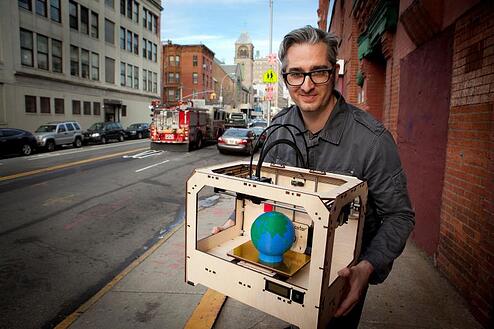Like all good presidents, President Obama leads with optimism and enthusiasm and doesn’t let reality hold him down. For example, in his 2013 State of The Union Speech he had this to say about the future of 3D printing: "3D printing has the potential to revolutionize the way we make almost everything. The next industrial revolution in manufacturing will happen in America."
The president was spot-on with the first sentence about the importance of 3D printing, and while we can forgive his optimism about the next industrial revolution happening in America, the reality is that unless we undertake some serious modifications of our teaching methods in the STEM disciplines, that next revolution is likely to happen somewhere else! Here’s why: far from being a leader in STEM learning, the United States is rated a dismal 17th in the prestigious Pearson’s International Education Index, and the Organization for Economic Cooperation and Development found that US 15-year-olds placed an even more dismal 25th out of 30 countries in math and 21st in science! How are we going to win this revolution without a large cadre of trained workers?
Short answer is, we’re not.
What we need to build up that cadre of talented STEM workers is more innovative initiatives like Makerbot’s Makerbot Academy, designed to get thousands of MakerBot Desktop 3D Printers into American Schools with the help of crowdfunder DonersChoose.Org. Crowdfunding makes owning one of these paradigm shifting machines within the reach of every teacher. To get on the list of recipients, teachers need to go to the DonersChoose website and request a Makerbot Academy Bundle. Your school and your request then becomes a separate project that potential donors can read about and donate to.
Why 3D printers? Because these radical new tools are not just amusing toys; 3D printers challenge students by forcing them to build -- not “build,” but “print”-- physical objects to solve problems. Students have printed everything from prosthetic hands to robots to car parts with these wonderful machines. Remember, these printers actually create three dimensional objects, not just images; and printing any 3D object requires a working knowledge of math, science and spatial reasoning, not to mention the entirely new science of additive manufacturing (man finally mimicking nature’s manufacturing method). 3D printers, like robots, will keep kids engaged and interested in math and the sciences at a time when they usually began to lose confidence in their ability to work with these disciplines.
If President Obama is right and 3D printing has the possibility of revolutionizing the way we make things in this country, then we all are going to have to work together to insure that America leads the way in this new revolution. The best way to do that is to see that our schools make the adjustments necessary to improve STEM learning in the classrooms and graduate more technologically proficient workers. The Makerbot Academy Initiative is one worthwhile means toward that end.


